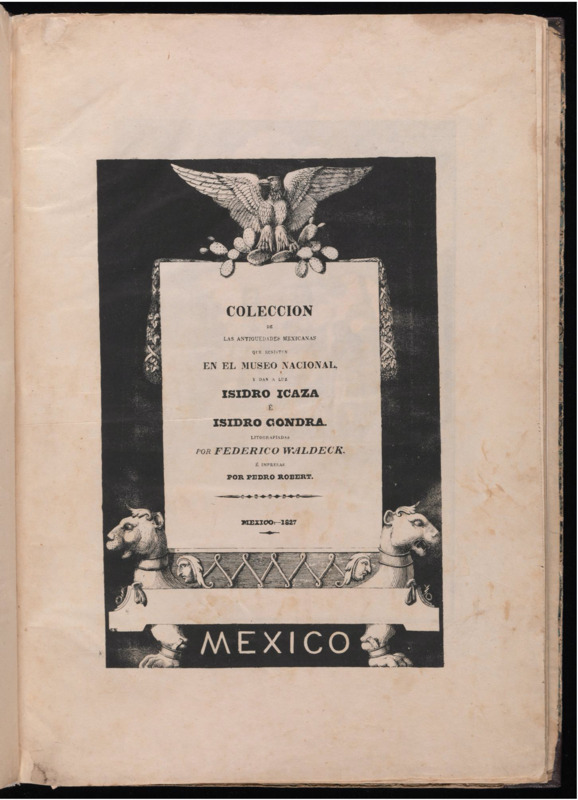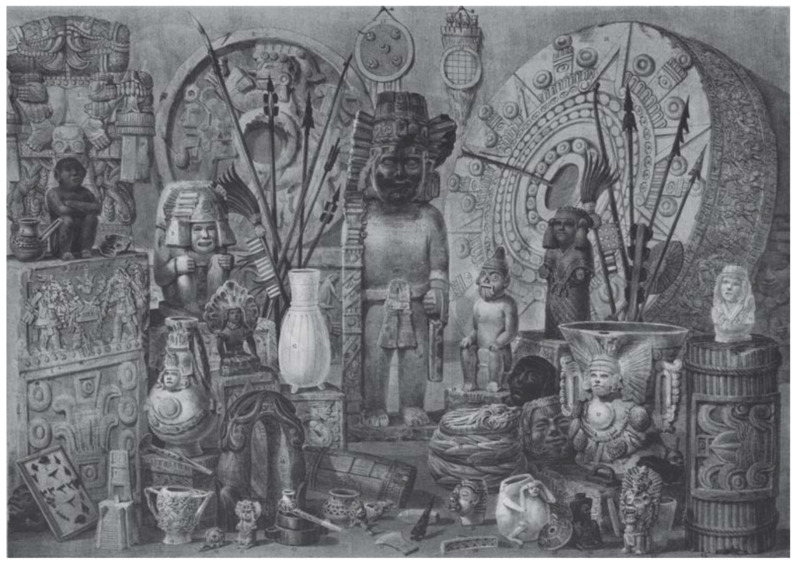History of the National Museum of Mexico
Lucas Alamán was influential in gaining Mexican independence and fought the Mexican government for the approval of the national museum since they did not have the money or see the importance of creating a national identity after gaining their freedom. Alamán saw the need to start a collection of all the antiquities of their nation and continued to be involved with the museum and forging opportunities to develop the nation’s identity. The creation and implementation of the National Museum of Mexico originally opened to house local antiquities and provide an identity for the culture for visitors outside of Mexico. However, the development of the museum was filled with problems due to the lack of government funding needed to properly run the museum and pay the staff, and because of other nations taking the antiquities from the archeological sites back to their countries. They were exploiting Mexico’s culture by taking objects, making casts, and providing false narratives of the artifacts. Since other cultures were taking the items there was less for the National Museum to excavate and house. As more rules and regulations regarding the artifacts went into place, there became a large involvement within the museum from overseeing inventory, the role of the director, and artists hired to complete renditions of the treasures as a way to provide press. They started to produce pamphlets through the museum where artists would draw different items that were on display and they would provide some information on the artifacts as a way to bring in an audience. Upon first reviews of the museum they were criticized for their lack of order and that their displays were just in a small room. Eventually, the museum began to get more donations leading to the expansion of the collection from a room to a more permanent building space with the addition of more ancient artifacts. The growth of the museum led to new ways of displaying the works to present a more complete history of Mexico and how it has evolved from the past to post colonization. It was important for them to house older archeological finds to tie present-day Mexico in with the great civilizations of the past. The way the museum has shifted provides an idea of how Mexico wants other countries to view them and how they went about forging their national identity. Eventually the National Museum of Mexico separated to also become the National Museum of Anthropology in Mexico, which was created to be a place to store the ancient antiquities of the culture. By addressing the past of the museum, we can get a sense of what the intent was when it was opened to how it was able to develop and be reworked and adapted to become a larger space that houses a grander collection. By seeing how the museum has grown it is apparent how the past is such a large part of the cultural identity of Mexico, and the importance of archeology in this endeavor. They way the museum went about funding and growing the collection and the goals within the museum shifted over time to include more modern artwork.

